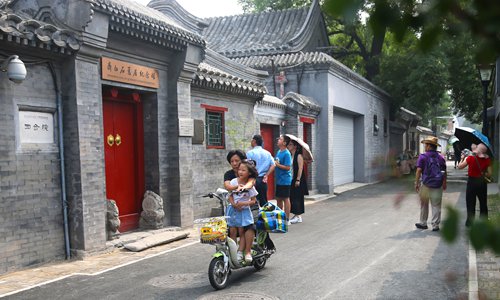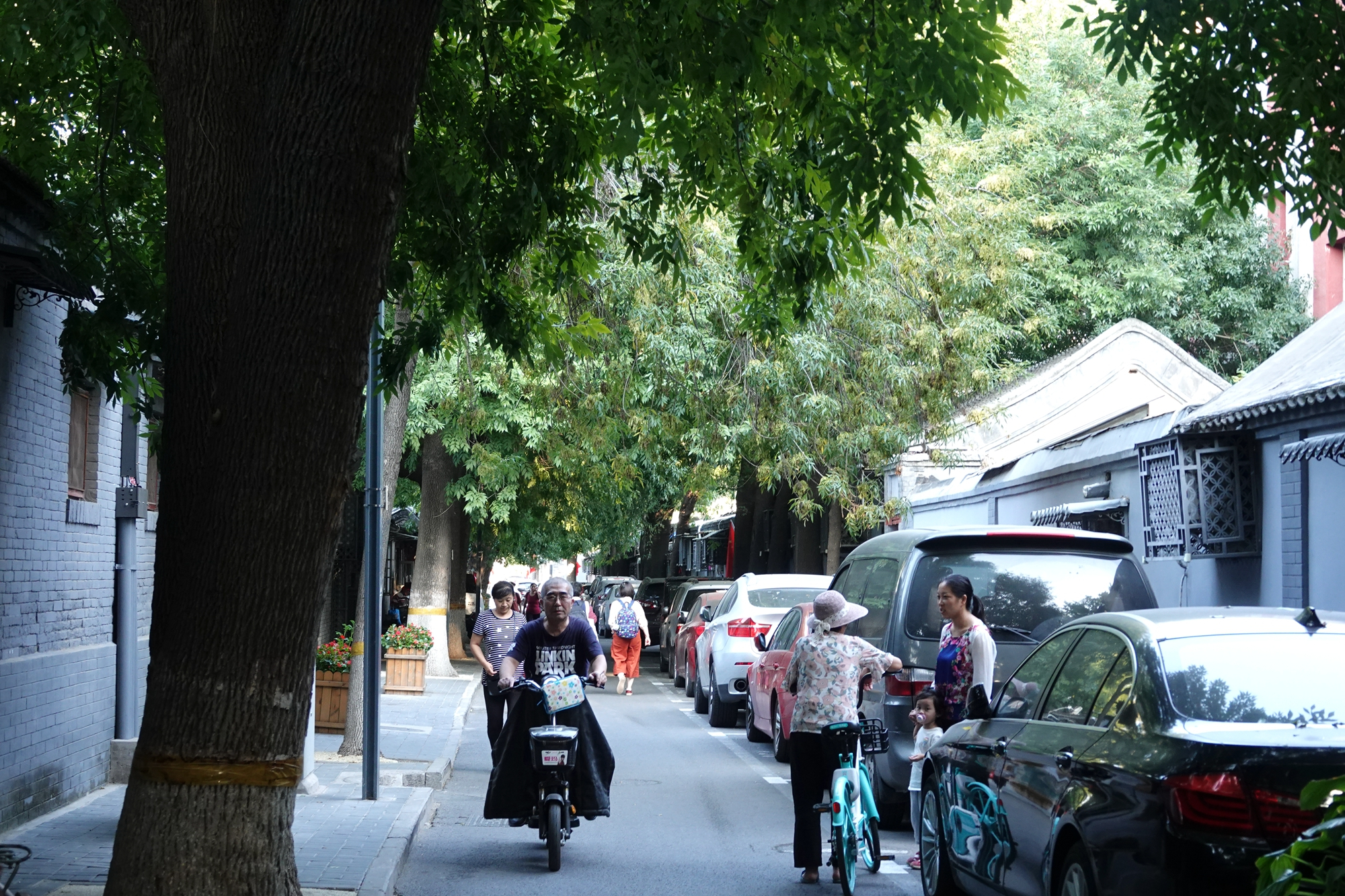
From the People's Daily App.
This is Story in the Story.
Beijing is stepping up protection of its old districts and buildings.
The Chinese capital will reinforce preservation of its old urban districts as the city authority released a draft plan on the capital's core functioning areas in the 2018-2035 period.
Beijing's core function area comprises of the city's Dongcheng and Xicheng districts with a total area of 92.5 square kilometers. Known as Beijing's old city area, the two districts have large numbers of traditional residential architecture and historical buildings.
The statement highlights the protection of Beijing's old city, stipulating that all buildings of the old city area should not be demolished, and stresses protection of the area should be prioritized, and such policy should be implemented strictly.
Today’s Story in the Story looks at what efforts are being made to preserve Beijing’s historic past.

A hutong in Beijing (Photo: IC)
According to the draft plan, streets featuring historic and cultural buildings occupy at least 26 percent of the capital's core functioning area and 34 percent of the old city area.
Li Zhirong, an associated professor with the Cultural Heritage Institute at Zhejiang University, said that she applauds the decision of stopping the demolition of Beijing's old city, even though it is considered late.
"Protecting Beijing's old city area is preserving information regarding the history of China's civilization in the age of globalization," said Li.
Now that the country attaches great importance to cultural heritage protection and makes it a way to enhance the country's cultural confidence, old city protection is not something easy to achieve, which requires thorough investigations, research and recollection, as well as handling complicated property ownerships, Li added.
To effectively preserve traces of the past, the city government will first conduct a category census on historic and cultural resources as well as historic streets and areas.
As part of the drive to preserve Beijing’s old districts, there is also a focus on the renovation of hutong (alleyway lined with traditional residences in Beijing) and quadrangle courtyards and residents' participation in building management.
The aim is to preserve the local housing in historical and cultural blocks in a way that also satisfies modern lifestyle demands.
Hutong is a cultural symbol of Beijing. There was an exhibition last year showing the daily life of Bing Yi, a modern artist, in hutong in Dongcheng district.

Shijia Hutong in Dongcheng District, Beijing. (Photo: CGTN)
By displaying how life in hutong brought vitality to her life and work, the exhibition aimed to introduce visitors to a new hutong lifestyle and to increase the use and social value of preserved residential blocks.
In 2019, Beijing Design Week included about 100 exhibitions and forums to highlight what organizers called Neighborhood Warming Initiatives.
The Master Zeng's Time Photo Studio invited 10 couples born in 1949, when the People's Republic of China was founded, and took wedding photos for them.
The studio activity also showcased designers' work for improving hutong residents' life quality and their emotional connections.
The reception room of Baitasi Block co-hosted an activity in cooperation with Beijing Pagoda Light International Youth Hostel, inviting visitors and local residents to interact by preparing Beijing and Western food.
The interaction activity helped tourists learn about culture and life in Beijing, an internationally acclaimed tourist destination, and promote neighborly relations in the new era, organizers said.
The 2019 exhibitions displayed design results of the Beijing-Zhangjiakou Railway green landscape; the historical Nanluoguxiang neighborhood, a busy south-north commercial area hidden among hutong; and the ancient Changxindian town in Beijing's Fengtai district.
The initiatives are part of the Baitasi Remade Plan to realize Beijing's overall plan for 2016-35.
The Baitasi plan aims to explore ways to improve the public environment and help regional revitalization.
Its purpose is to maintain the residential role of hutong and traditional quadrangle courtyards. Meanwhile, it is to create new cultural blocks featuring elements such as design, cultural creativity and exhibitions.
(Produced by Nancy Yan Xu, Brian Lowe, Lance Crayon and Paris Yelu Xu. Music by: bensound.com. Text from Global Times and China Daily.)


